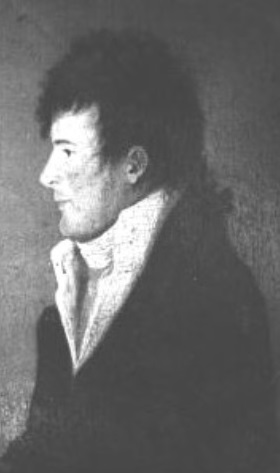James Wood (governor) facts for kids
Quick facts for kids
James Wood
|
|
|---|---|

Photo of a portrait painted circa 1798. Original photo in archives of the Library of Virginia.
|
|
| 11th Governor of Virginia | |
| In office December 1, 1796 – December 1, 1799 |
|
| Preceded by | Robert Brooke |
| Succeeded by | James Monroe |
| Personal details | |
| Born | January 28, 1741 Winchester, Virginia |
| Died | June 16, 1813 (aged 72) Richmond, Virginia |
| Nationality | American |
| Political party | Federalist |
| Spouse | Jean Moncure |
| Profession | Vestryman, soldier |
| Signature | |
James Wood (born January 28, 1741 – died June 16, 1813) was an important leader in early American history. He served as an officer in the Continental Army during the American Revolution. Later, he became the 11th Governor of Virginia.
Contents
Early Life in Virginia
James Wood was born in Winchester, Virginia, on January 28, 1741. His father, also named James Wood, was an immigrant who helped create the town of Winchester. He also worked as a surveyor for Thomas Fairfax, 6th Lord Fairfax of Cameron.
Young James Wood received his education at home. Like his father, he became active in the local church, Christ Episcopal Church in Winchester.
Public Service and Military Career
In February 1760, James Wood started his public service as a Deputy Clerk for the County Court. From 1766 to 1775, he served in the Virginia House of Burgesses. This was a group of elected representatives who made laws for the Virginia colony.
Wood married Jane Moncure, but they did not have any children.
Joining the Military
In 1774, the Governor, Lord Dunmore, made Wood a captain of Virginia troops. Wood fought in the Battle of Point Pleasant during Lord Dunmore's War. After the battle, he helped negotiate a peace treaty with the Shawnee Native Americans at Fort Pitt.
Service in the American Revolution
When the American Revolution began, Wood played a key role. In 1776, he was made a lieutenant colonel in the Frederick County Militia.
In February 1777, he became the commander of the 12th Virginia Regiment. He led his soldiers during important battles like the Philadelphia campaign and the Battle of Monmouth.
Leading the Convention Army
In late 1777, Wood's regiment was renamed the 8th Virginia Regiment. He was then put in charge of the Convention Army. This was a group of British prisoners captured during the Saratoga campaign. They were moved to Charlottesville, Virginia.
Wood continued in this important role until January 1783. At that time, he was promoted to brigadier general in the Virginia militia. After the war, Wood became a founding member of the Virginia Society of the Cincinnati. This was an organization for officers who served in the Continental Army.
Political Life
After the Revolutionary War, James Wood continued his public service. From 1784 to 1796, he was a member of Virginia's Executive Council. This council helped the governor run the state.
Presidential Election of 1789
In 1789, Wood was chosen as an elector for the first presidential election. He represented a large area that included parts of what is now West Virginia.
All ten Virginia electors voted for George Washington to be president. Five of them also voted for John Adams to be vice president.
Governor of Virginia
James Wood was a member of the Federalist Party. In 1796, he was elected as Virginia's 11th governor. He served in this role until 1799.
Besides his political work, Wood was also a strong supporter of an early abolition society in Virginia. This group worked to end slavery. From 1802 until his death, Wood served as the President of the Society of the Cincinnati.
Death and Legacy
James Wood passed away in Richmond on June 16, 1813, at the age of 72. He was buried in St. John's churchyard in Richmond.
His legacy lives on through several schools and places named after him. James Wood High School and James Wood Middle School in Frederick County, Virginia, are named in his honor. Wood County, West Virginia, is also named after this important Revolutionary War colonel and governor.
Images for kids

